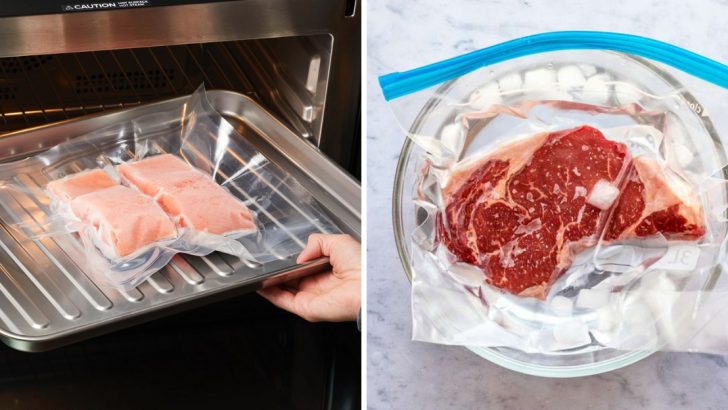Ever grabbed frozen meat for dinner only to realize you forgot to thaw it? We’ve all been there! Thawing meat safely isn’t just about convenience—it’s about keeping harmful bacteria at bay and preserving flavor.
The method you choose can mean the difference between a delicious meal and a trip to the emergency room with food poisoning. From dangerous shortcuts to food-safe solutions, here’s your ultimate guide to meat thawing.
1. On The Counter At Room Temperature

Forget what Grandma taught you! Leaving meat on the counter is basically rolling out the red carpet for bacteria. At room temperature, the outer layers warm up while the center stays frozen, creating a microbial party zone where dangerous pathogens multiply like crazy.
Food safety experts call this the “danger zone”—temperatures between 40°F and 140°F where bacteria double faster than teenagers can empty your fridge. One hour at room temperature can increase bacteria levels by 1000%!
2. In Hot Water
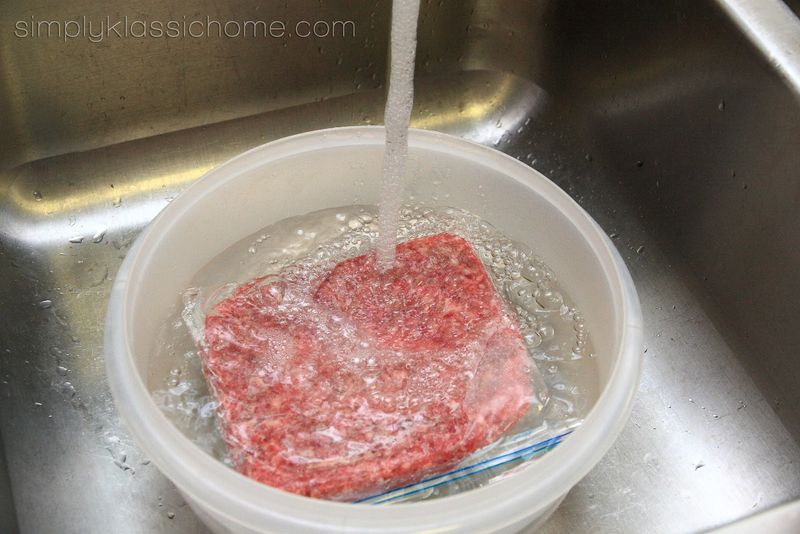
Dunking frozen meat in hot water might seem like a genius shortcut, but it’s actually a bacterial breeding bonanza! The outer layers cook slightly while the center remains frozen solid, creating the perfect warm, moist environment for microbes to throw a wild reproduction party.
Think about it: that chicken breast sitting in hot water is essentially being par-cooked on the outside while staying frozen inside. This temperature inconsistency is exactly how foodborne illnesses get their big break.
3. Leaving It In The Sun

Someone actually suggested putting meat in direct sunlight to thaw! This bizarre method combines all the worst aspects of unsafe thawing—inconsistent temperatures, bacterial growth, and bonus UV radiation. Imagine your pork chops getting a suntan while bacteria multiply exponentially!
The sun’s heat is completely uncontrollable, potentially cooking parts of your meat while other sections remain frozen. Plus, flies and other insects will likely discover your sun-soaked meat before you’re ready to cook it.
4. Using A Hair Dryer Or Space Heater
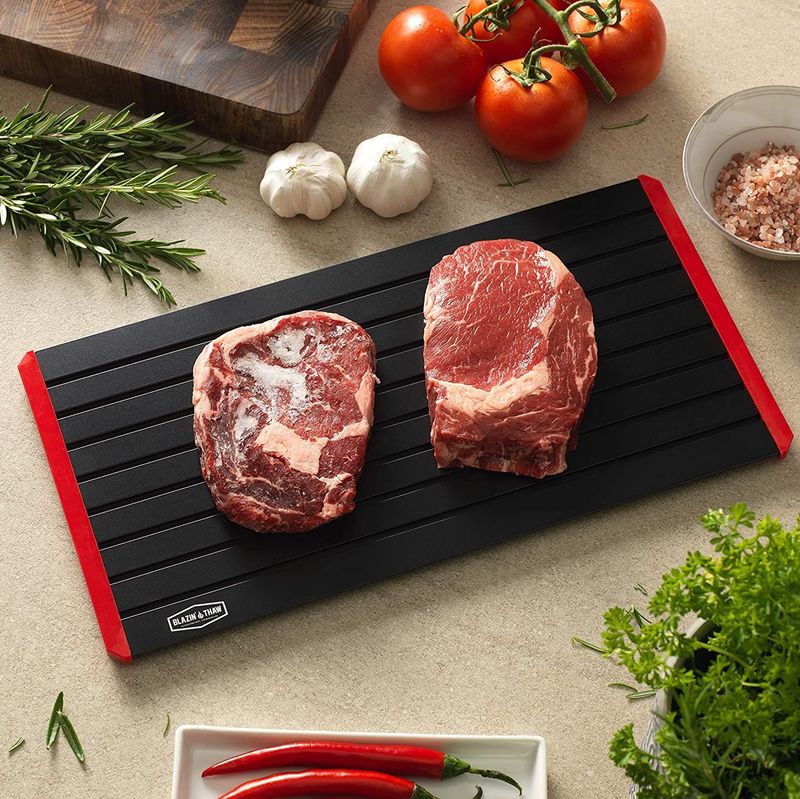
Hair dryer in one hand, frozen chicken in the other—what could possibly go wrong? Everything! This desperate hack blasts bacteria-friendly warm air directly onto your meat, creating the perfect storm for foodborne illness.
Beyond the obvious hygiene issues (your hair styling tool should never touch food), the uneven heating creates hot spots where bacteria thrive while other areas remain frozen. The external layers quickly enter the danger zone while the center stays rock-solid.
5. Oven Thawing
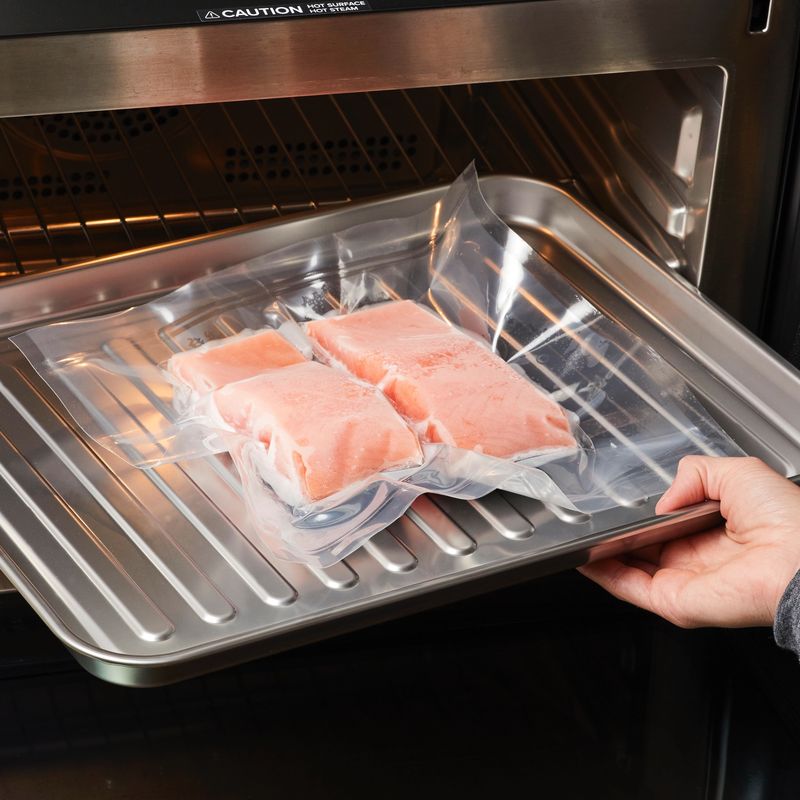
“Just pop it in the oven on low heat!” screams terrible advice from the internet. Your oven—even at its lowest setting—is still designed for cooking, not thawing. This method essentially slow-cooks the outside of your meat while the inside remains a frozen block.
The temperature differential creates the perfect environment for bacterial growth in those partially-warmed sections. By the time the center thaws, the exterior has been lingering in the danger zone for hours, potentially hosting millions of unwelcome microbial guests.
6. Salt Water Soak
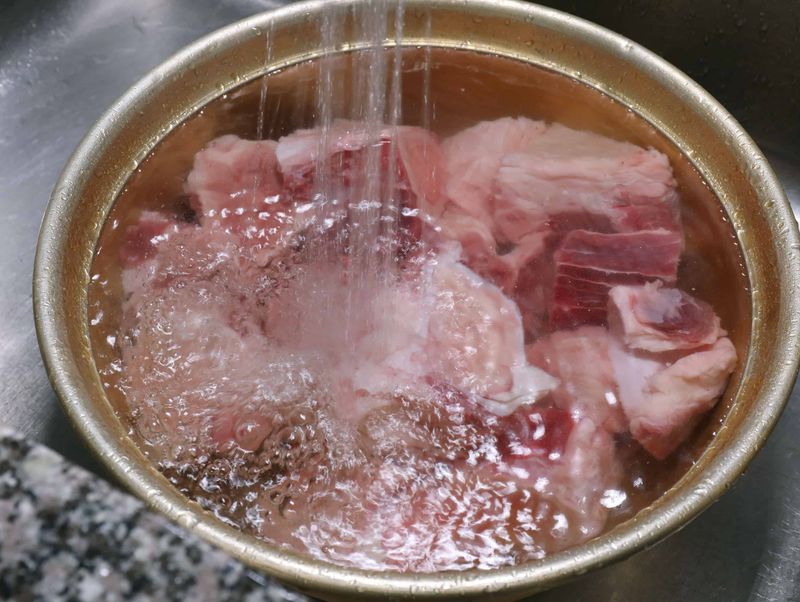
Soaking meat in room temperature salt water isn’t the clever hack some people think it is! While salt water does conduct heat better than plain water, leaving it at room temperature is still playing bacterial roulette with your dinner.
The salt might speed up thawing slightly, but it doesn’t make the process magically safe. That bowl sitting on your counter still allows the meat’s exterior to warm well into the danger zone long before the center thaws.
7. In The Refrigerator
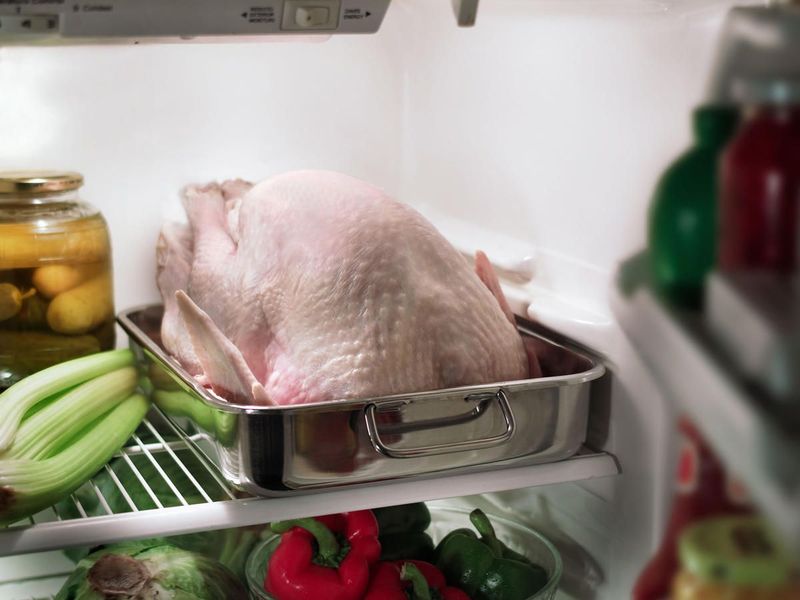
Planning ahead pays off! Refrigerator thawing might not offer instant gratification, but it’s the gold standard for food safety. Your meat thaws gradually at a consistent temperature that keeps bacteria growth in check the entire time.
The beauty lies in its simplicity: place frozen meat on a plate (to catch drips) on the bottom shelf, and let science do its thing. A pound of ground beef needs about 24 hours, while larger roasts might require 2-3 days.
8. Cold Water Bath
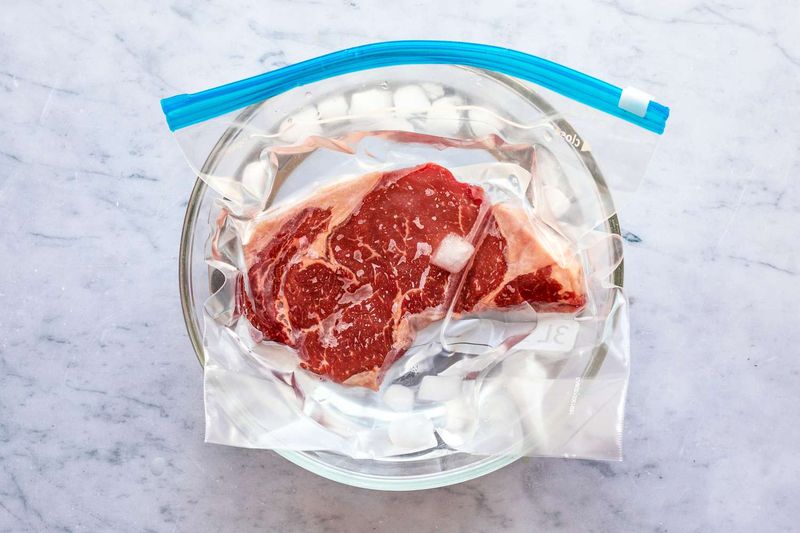
Need that chicken thawed faster than the fridge allows? The cold water bath method is your food-safe superhero! Seal meat in a leakproof bag, submerge in cold tap water, and change the water every 30 minutes to maintain safe temperatures.
Unlike dangerous hot water methods, cold water thawing keeps the meat’s exterior cold enough to prevent bacterial growth while still thawing much faster than refrigeration. A pound of meat thaws in approximately one hour—about 30 times faster than refrigerator thawing!
9. Microwave (Defrost Setting)
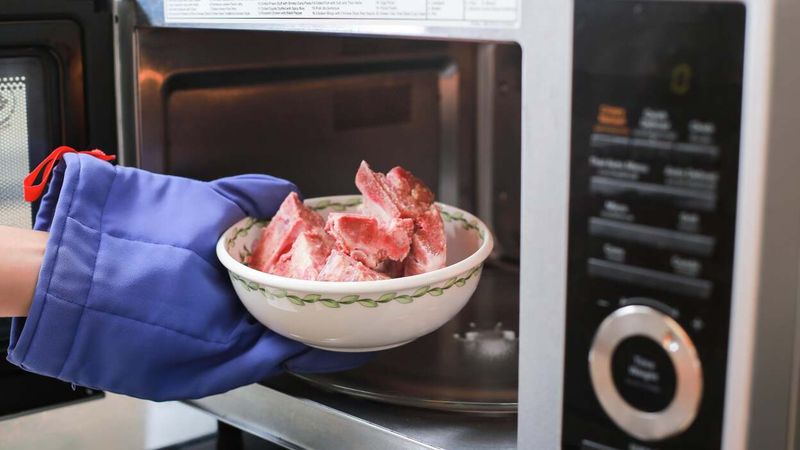
Desperate times call for defrost settings! When used correctly, your microwave can safely thaw meat in minutes without cooking it. The key is using the actual defrost setting—not just zapping at full power like a kitchen caveman.
Modern microwaves calculate thawing times based on weight, alternating between low power and rest periods to allow heat to distribute evenly. Remove packaging first (especially foam trays with those absorbent pads), place meat on a microwave-safe plate, and follow your appliance’s instructions.
10. Sous Vide In Cold Water
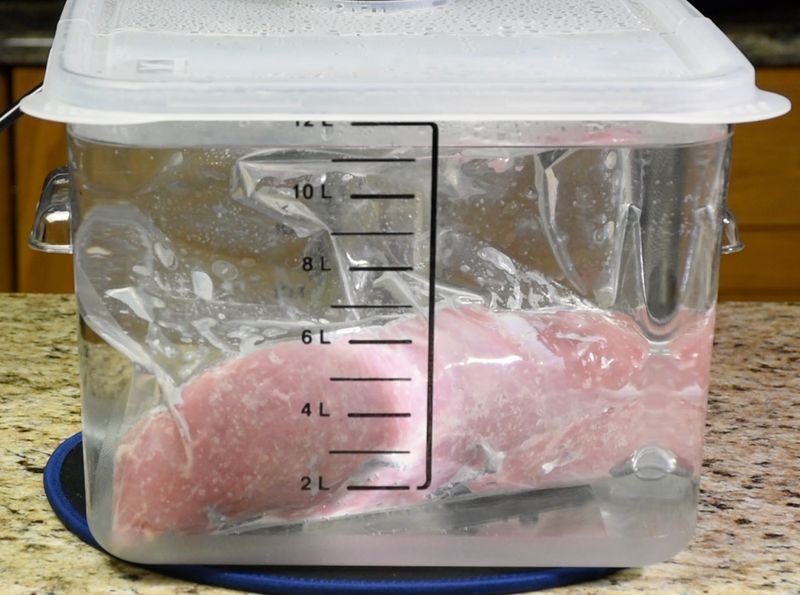
Sous vide isn’t just for cooking—it’s a thawing game-changer! Using a sous vide setup with cold water (around 35-38°F) creates the perfect controlled environment for rapid, safe thawing without risking bacterial growth.
The circulating water prevents temperature pockets, ensuring uniform thawing throughout your vacuum-sealed meat. Unlike regular cold water baths, you don’t need to change the water every 30 minutes since the circulator maintains consistent temperatures.
11. Frozen-To-Fire Direct Cooking
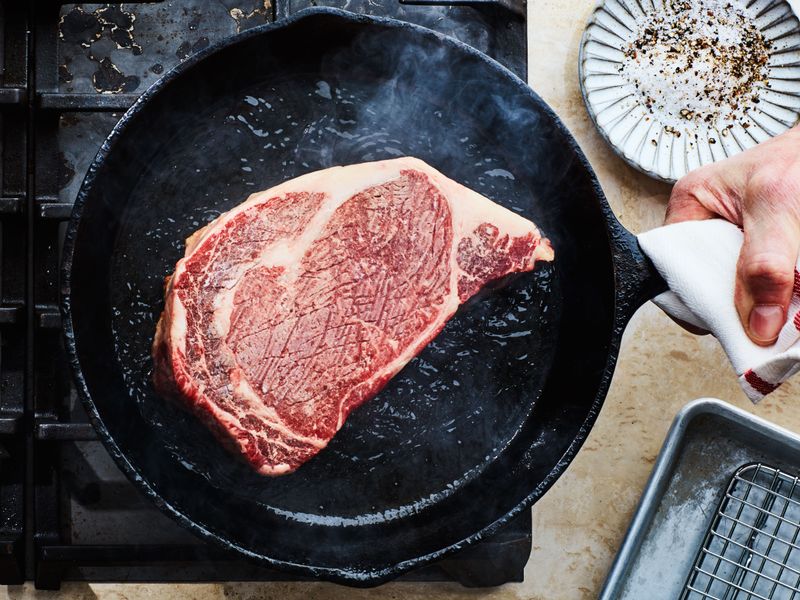
Skip thawing entirely! Cooking meat directly from frozen isn’t just safe—it’s often better for certain cuts. Frozen steaks actually develop less of that overcooked gray band between the crust and the center than their thawed counterparts.
The key is adjusting cooking times (add about 50% more) and using a meat thermometer to ensure doneness. Thin items like burgers and some seafood work beautifully, while chicken breasts require careful attention to ensure they cook through evenly.
12. Cooler Method For Bulk Thawing
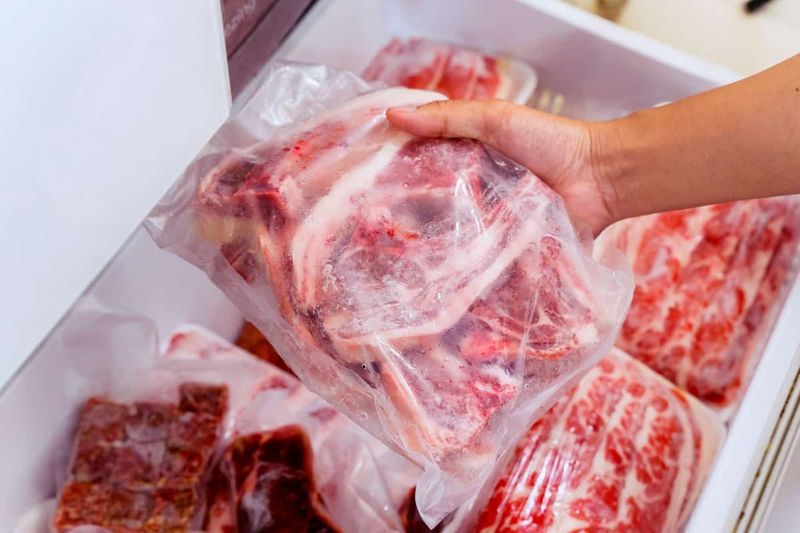
Throwing a BBQ tomorrow but forgot to thaw those twenty steaks? The cooler method combines the safety of refrigeration with the faster speed of water thawing—perfect for large quantities!
Place vacuum-sealed or tightly wrapped meats in a clean cooler with ice packs strategically positioned to maintain temperatures between 35-38°F. The insulated environment keeps temperatures consistent while allowing faster thawing than a refrigerator.

